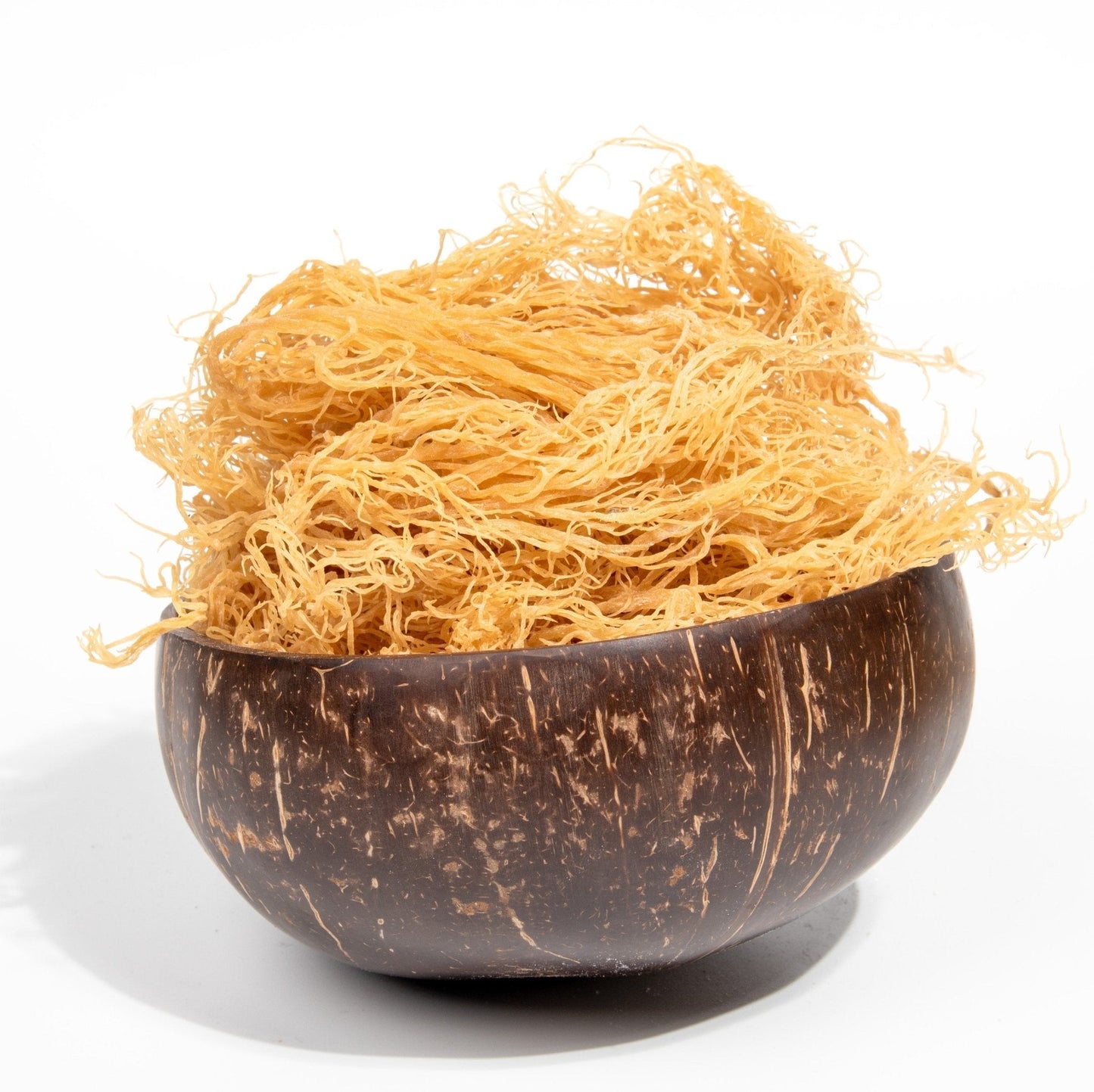
What Is Sea Moss? A UK Guide to This Nutrient-Rich Superfood
Author: John S. Matthews | Updated: Monday, 13 October 2025 | 13:45 BST
Sea moss (often called Irish moss; Chondrus crispus) is a red seaweed that grows along Atlantic coastlines—from Ireland and Scotland to the Caribbean. Long used in traditional kitchens for its gentle thickening power, it’s now popular across the UK for its versatility in food, drink, and minimalist skincare.
Featured Summary: Sea moss is a red seaweed blended into a smooth gel and used in small daily amounts (1–2 tbsp) in smoothies, teas, soups, and simple skincare. Choose wild-harvested, additive-free products, keep gel refrigerated, and treat sea moss as a food-first add-in—not a cure-all.
Varieties and Popular UK Formats
Colours: You’ll commonly see gold (mild flavour, great all-rounder) and purple (deeper marine aroma). Natural colour variation is normal in authentic, ocean-grown batches.
- Raw dried strands: Rinse, soak, and blend with water to make gel at home.
- Ready-made gel: The most convenient format—store in the fridge and use a clean spoon.
- Capsules: Mess-free, travel-friendly option for those who don’t want to blend.
- Powder: Easy to whisk into drinks or recipes; check that it’s pure and additive-free.
Why It’s Trending in the UK
- Plant-based & minimalist: A whole-food ingredient that fits vegan and low-processed approaches.
- Kitchen versatility: Disappears into smoothies, soups, oats, and sauces; also used in simple DIY skincare.
- Back to basics: A single-ingredient gel that supports simple, consistent daily habits.
Sea Moss & Its Nutritional Profile (Plain-English)
Seaweeds naturally contain minerals and soluble fibres. Exact amounts vary by species and waters, but many UK consumers choose sea moss as a gentle way to add naturally occurring minerals to a balanced diet.
Common naturally occurring components (vary by batch):
- Iodine (thyroid support*)
- Magnesium, Potassium, Calcium
- Iron and Zinc (trace levels)
- Soluble fibre & mucilage (the “gel” texture)
- Taurine (a sulphur-rich amino acid)
*If you have a thyroid condition or take thyroid medication, speak to a healthcare professional before regular seaweed use.
How to Prepare Sea Moss Gel at Home
- Rinse thoroughly: Swish dried sea moss in cold water several times to remove sand and salt.
- Soak 12–24 hours: Use filtered or spring water; change water once halfway for a cleaner taste.
- Blend: Add fresh water and blend until silky. Start thick (less water); you can thin later.
- Store: Pour into a clean jar, refrigerate, and use within the fresh window on your label (commonly up to 2–3 weeks).
Tip: Batches vary naturally. If your gel sets too firm, whisk in a little water; if too loose, use less water next time.
Daily Use: How Much & When to Take It
Typical serving: 1–2 tablespoons per day. New to sea moss? Start with 1 teaspoon and increase gradually. You can take your daily amount all at once or split across the day.
| Timing | Good For | Easy Ideas |
|---|---|---|
| Morning | Consistency & routine | Smoothie, warm lemon water, porridge |
| With Meals | Convenience & taste | Soups, sauces, salad dressings |
| Pre/Post-Workout | Shake habit | Protein smoothie, coconut water |
| Evening | Wind-down | Chamomile or spiced oat milk |
Creative Ways to Use Sea Moss (UK Kitchen)
Mango & Lime Smoothie
- Blend sea moss gel with mango, lime, and oat milk for a bright, silky drink.
Overnight Oats with Sea Moss
- Combine oats, chia, almond milk, a spoon of gel, and berries; refrigerate overnight.
Citrus Morning Shot
- Stir gel into lemon & ginger; take as a quick, zesty start.
Herbal Tea Add-In
- Whisk a teaspoon into warm (not boiling) herbal tea; sip while warm.
Simple Face Mask
- Apply a thin layer of gel for 10–15 minutes; rinse. Always patch test first and avoid eyes.
Choosing Quality Sea Moss (Sourcing Matters)
- Wild-harvested origin: Prefer ocean-grown moss from transparent coastal sources.
- Minimal processing: Sun-dried, clean labels, and no bleach.
- Additive-free: Many UK shoppers avoid preservatives like sorbic acid in gels.
- Natural variation: Slight differences in colour and strand shape are normal signs of authenticity.
At Pure Sea Moss UK, we source wild-harvested sea moss and prepare gels without bleach or artificial preservatives—keeping the ingredient list short and honest.
Safety & Sensible Use
Sea moss is a food-first ingredient. Because seaweeds can contain iodine, some people should take extra care:
- Those with thyroid conditions or on thyroid medication.
- Pregnant or breastfeeding individuals.
- Anyone on prescribed medication—check with your GP or pharmacist.
As with any new food, start small and observe your own tolerance.
Storage & Hygiene
- Fridge only: Keep gel chilled; use a clean spoon—no double dipping.
- Use-by: Follow the date on the jar. Fresh gels have a finite fridge life.
- Separate jars: If using gel for skincare as well, keep a dedicated jar for topical use.
Quick Myths vs Facts
-
Myth: “Sea moss cures conditions.”
Fact: It’s a nutrient-dense food—use as part of a balanced diet; it’s not a medical treatment. -
Myth: “All sea moss is the same.”
Fact: Species, waters, and handling differ. Sourcing and processing impact taste, texture, and mineral profile. -
Myth: “Clear gels are always better.”
Fact: Authentic gels vary naturally in colour and thickness; clarity isn’t a quality guarantee.
FAQs
-
Is sea moss vegan?
Yes—sea moss is a marine plant and fits vegan diets. -
How much should I take daily?
Many people use 1–2 tbsp of gel per day (follow your product label). -
Can I cook with it?
Yes—stir into hot dishes near the end of cooking so it blends smoothly. -
What does it taste like?
When well rinsed, it’s very mild; it disappears into smoothies and soups. -
Purple vs gold—what’s the difference?
Purple has a slightly richer marine aroma; gold is milder. Both are used the same way.
Related Reading
Disclaimer: This guide shares general information and is not medical advice. If you have a thyroid condition, are pregnant/breastfeeding, or take prescribed medication, consult a healthcare professional before using sea moss regularly.
